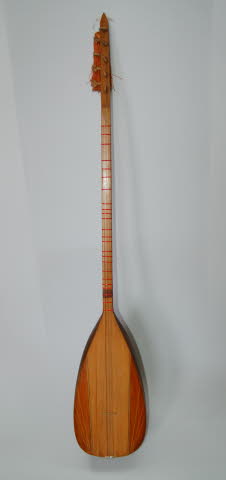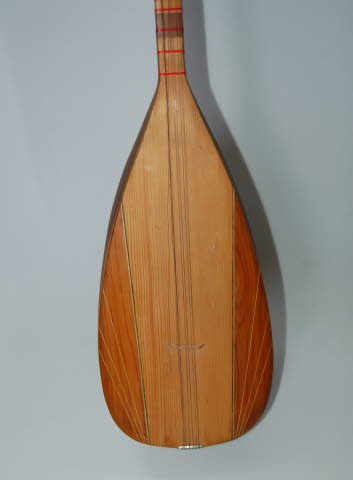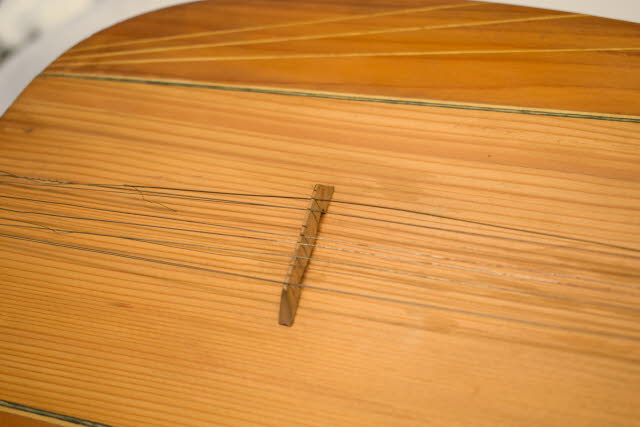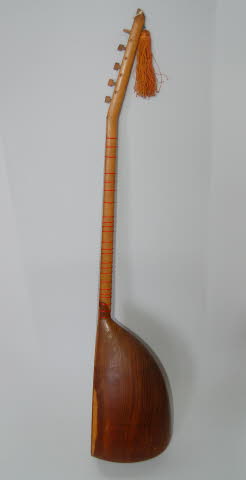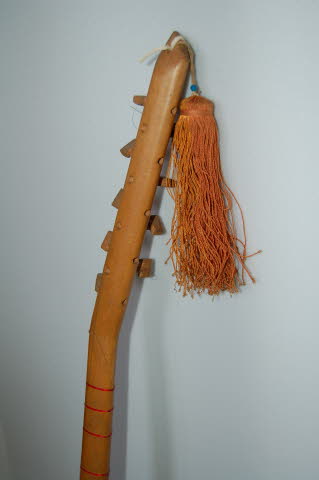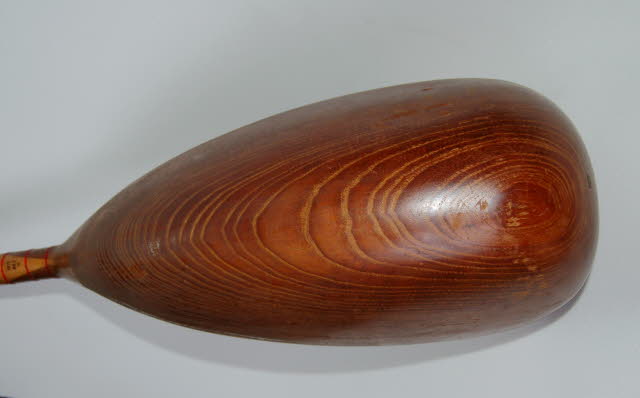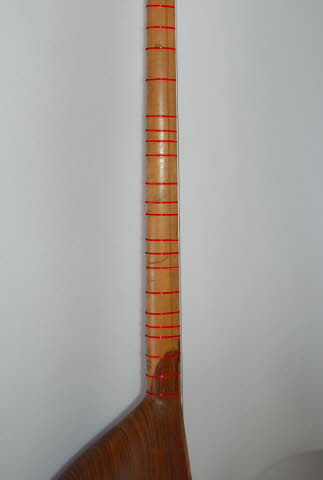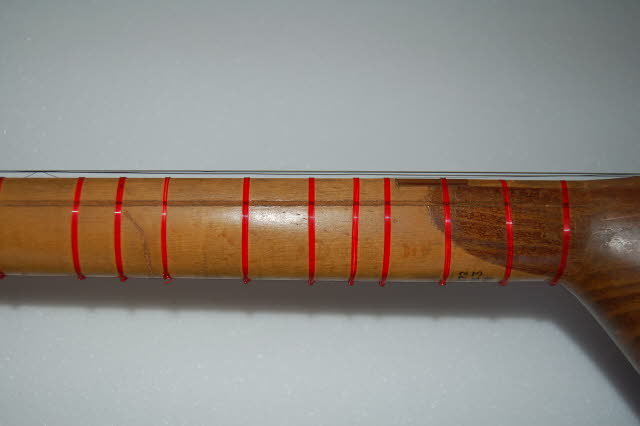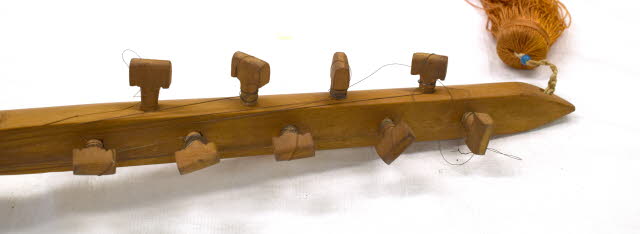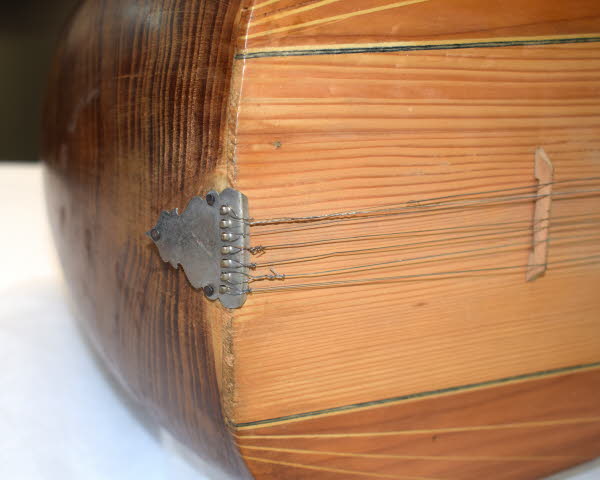Musical instrument (saz (saz baglama?))
BackDescription:
Plucked string instrument called a saz. The pear-shaped body is carved from a block of hollowed out wood with two small round sound-holes on the bottom. The sound-board is made of several strips of thin wood in varying colours. The thin, long neck is glued with a V-joint to the body. The tuning-head is also attached with a V-joint to the neck and has nine T-shaped tuning pegs. The neck has tied-on frets of red nylon thread. Eight of the nine original steel strings are present. An orange silk tassel is tied to the end of the neck.
Object type: | musical instrument (saz (saz baglama?)) |
Museum number: | Eu1972,01.8 |
Date: | 20thC(early) |
Production place: | Made in: Turkey |
Findspot: | Found/Acquired: Europe (?) |
Materials: | wood, steel, nylon, silk |
Technique: | carved |
Dimensions: | Length: 136.50 cm Height: 27.00 cm Width: 24.00 cm (approx) Weight: 1.34 kg |
Location: | 61 |
Subjects: | music |
Acquisition names: | Purchased from: Miss Susan Walston |
Acquisition date: | 1972 |
Curator's comments:
The saz is the most well-known Turkish plucked instrument. It comes in several different sizes: the small cura, the baglama, the bigger divan saz and the biggest - the meydan saz. Nowadays you can also find an electric saz. The baglama (pronounce : bah-lahma) is the most popular. In Iran and Azerbaijan this instrument may be called chogur, choghur or çogur. The body of the saz is traditionally carved from a block of wood, hollowed out with a round soundhole on the bottom side. However nowadays the body is often made from separate ribs glued together. It has a thin wooden soundboard, with usually several strips of different coloured wood on both sides. The neck is quite thin and glued with a V-join to the body. The tuning-head is a separate piece of wood, and set under a slight angle with a V-join to the neck. The neck has tied-on frets of nylon string, some in 1/4 notes. On the left side is a groove along the edge, to ease the making of knots in the frets. It has eight steel strings in three courses; the middle course with two, both others with three strings. They run over a small wooden bridge to a piece of wood on the edge of the body. The T-shaped friction pegs are usually four on the front and four on the (left) side of the tuning-head The saz is played with a plectrum and mainly only the first course. Some players manage to tap with the ring-finger on the soundboard while strumming (like flamenco players), to give a special extra rhythm effect. Others use a kind of tapping. Most sizes of the saz can have either a long or short neck. The short neck requires a different playing style as the lower notes are on the other strings.
